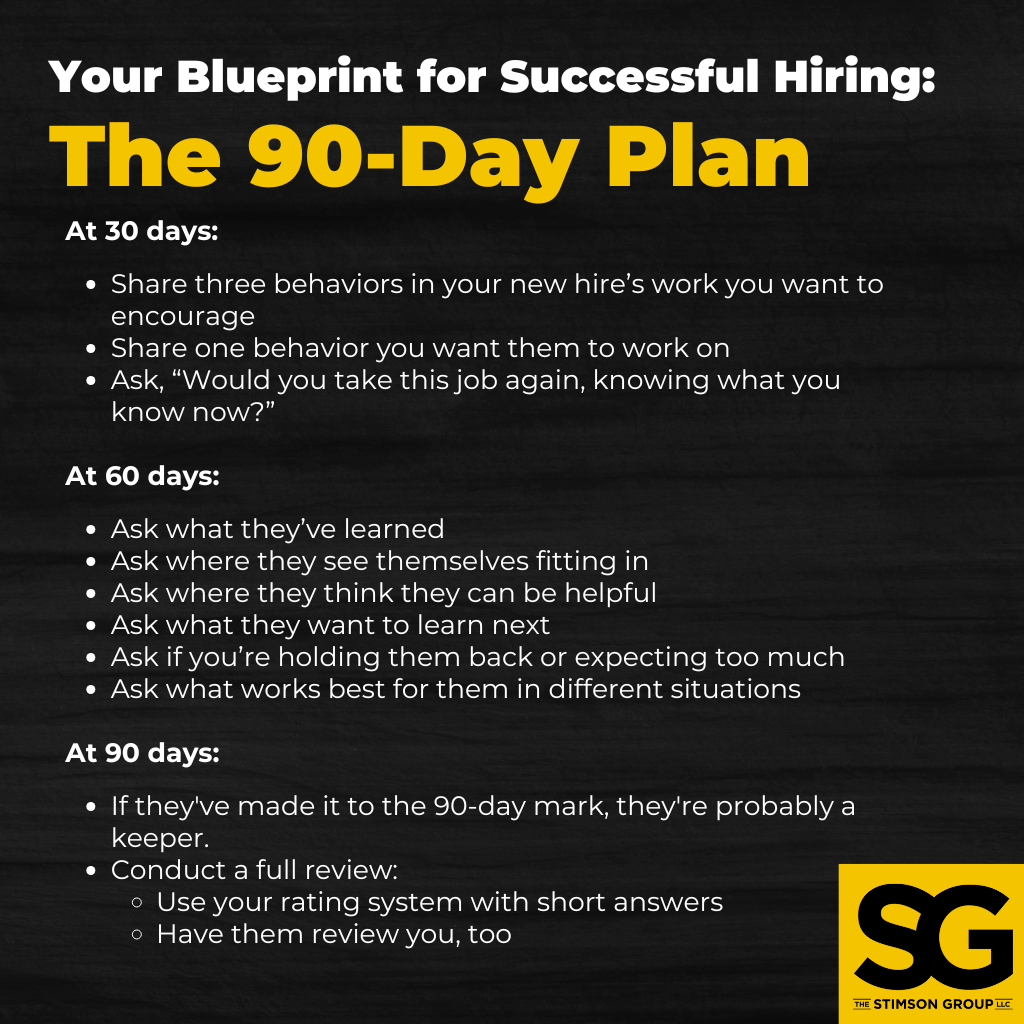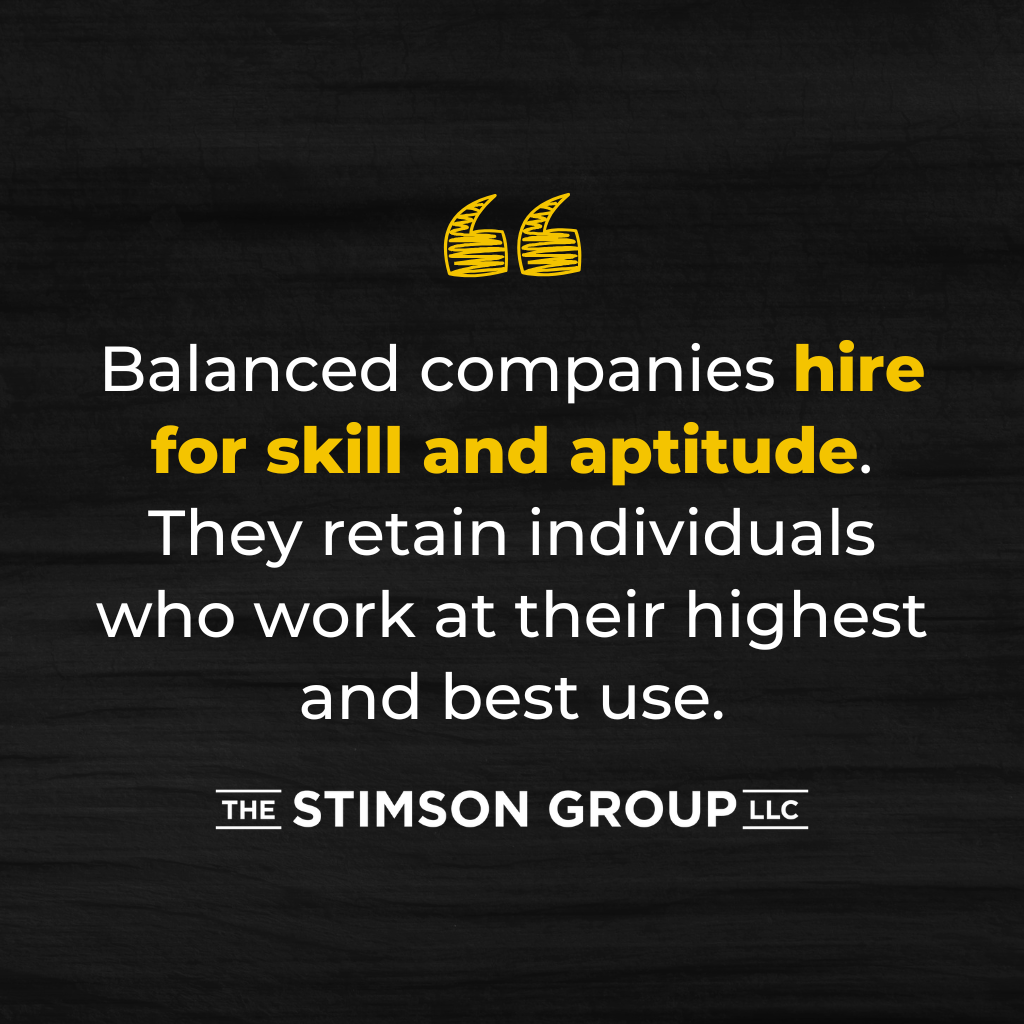
Listen instead on your Monday Morning Drive:
Hiring and keeping good people is hard. And because it’s hard, we make it harder on ourselves. We try to prevent past mistakes by overthinking the hiring process and setting unrealistic expectations.
Managing gear, on the other hand, is easy. Equipment generally behaves. It stays where you left it. If you take care of it, it does what it’s supposed to do, and if it’s finicky, you can fix it.
You can’t fix people. They have to fix themselves. Trying to change other people wastes time.
But if you hire the right people — people who either don’t need to fix themselves or are motivated to fix themselves — keeping them becomes easier. I’ll explain how.
Why Most Traditional Hiring Methods Fail
Long hiring methods waste time. If you can’t make someone an offer within 10 days, you’re just spinning your wheels. Put the word out, develop a process, and move quickly.
“But how do I know they’re the right hire without five conversations?” you ask.
Five conversations don’t tell you anything. If you’re like most people, you identify the people you want to talk to again quickly.
For example, when a show crew arrives in a ballroom with 10 strangers, within 10 minutes, you know which of those strangers you’ll ask for help throughout the day and which you’ll keep far away.
So, to identify the candidates you want to talk to again, ask them what they know. Don’t hire anyone who thinks they know it all. If they’re not coming to your business to share what they know and learn more, they’ll be a nightmare to manage.

Your Blueprint for Success: The 90-Day Plan
Hire someone on contingency and say, “We’ll check on these milestones and check in with each other every 30 days. I’ll make sure you’re doing right by me; you’ll make sure I’m doing right by you. If either of us feels we made a bad choice, we can part ways.”
This 90-day plan includes 30-, 60-, and 90-day checkpoints. Both parties sit down at each checkpoint and review a checklist of items. This creates avenues for open discussion and fulfills the promise you made to each other.
The 30-Day Checkpoint
At 30 days:
- Share three behaviors in your new hire’s work you want to encourage
- Share one behavior you want them to work on
- Ask, “Would you take this job again, knowing what you know now?”
Then shut up and listen.
Your new hire will receive the encouragement well. You might receive feedback on the improvement area. There might be accommodations you haven’t discussed: “I can’t physically get here five minutes before eight because I have to drop off my kids in the morning. I can only get here at 8:05.”
Now we have clarity. You may say, “I’ll make your start time 8:15. I don’t want you to fail by being a few minutes late all the time.”
When you ask if they’d take the job again, they might say they love what they’re doing, or they might say, “All I’ve done is clean cases for 30 days. Nobody’s taught me anything.”
Is that a problem with your new hire or your old ones?
Sometimes, you realize you made a hiring mistake. If so, now is the time to undo it: “Here’s what I like about what you do, but I see major problems. Today is your last day. Here’s your final check. Here’s what you can work on in your next job. Best of luck.”
Just because you fail at hiring once doesn’t mean you can’t hire anyone. You won’t have a perfect success rate. Keep trying.
The 60-Day Checkpoint
At 60 days, take communication to the next level:
- Ask what they’ve learned
- Ask where they see themselves fitting in
- Ask where they think they can be helpful
- Ask what they want to learn next
- Ask if you’re holding them back or expecting too much
- Ask what works best for them in different situations
This is about expanding communication. They know more about your business now, so you need to know more about them and their working style.
Perhaps you’ll learn they have a master’s degree in Information Technology and should be in a different role entirely. Great! Figure out how to move them.
The 90-Day Checkpoint
If they’ve made it to the 90-day mark, they’re probably a keeper.
Conduct a full review, just like you would annually. Use your rating system with short answers. Have them review you, too.
During this conversation, you might discover higher aspirations: “I really want to be a project manager. Here’s how I think I could get there.”
If you don’t need a project manager right now, you can still say, “Let’s start working on those skills.”
At any checkpoint, either party can say, “This isn’t right for me.” The employee might say, “I love the potential, but I’m trapped in a narrow set of tasks. I can’t stay much longer.”
The Power of Checkpoints
After 90 days, you’ll deal with bumps in the road:
- Misaligned expectations
- Misaligned goals
- Disagreement about assessments
- Aspiration beyond capability
- Promotion beyond competency (the Peter Principle)
Touch base often. Sometimes, an honest conversation about your hire’s aspirations is best: “I don’t see that path for you here. If that’s what you want, here’s what you can work on in your spare time. When you’re ready to move on, I’ll help you find a job elsewhere.”
Pay For Value, Not History
Compensation shouldn’t be fuzzy. What would you pay someone to do this job at their level if you hired them all over again?
Too often, we focus on an employee’s current earnings rather than their value. I once hired a young audio technician who started in the warehouse but quickly proved he would be a highly competent A1 and system engineer. Getting him to the right pay meant doubling his salary.
Others fretted over it, but I didn’t see the problem. “If we hired him today with everything he knows, we’d gladly pay him more,” I said. “This is replacement cost. What is he worth now? Let’s pay him that.”
Balanced companies require half the employees old models require, and those employees need to be twice as good. If someone is twice as good, pay them more. You don’t have to pay twice as much, but 50% more makes sense: they’re doing multiple people’s work and preventing issues that would cause pain and lose revenue.
What Makes Someone Valuable?
What are your company’s milestones for advancement? When someone masters a skill, what happens? What designates someone as top-level?
Write down those milestones. The order may differ for each person, and they may reach a level with a different balance of skills, but you need to know what those skills are.
When an employee asks, “How can I make more money?” give clear answers:
- Finish these courses, or
- Learn this equipment, or
- Be more consistent in your work
Your best employees are consistent regardless of circumstances. However, they might become disgruntled if they’re underpaid. Your lack of planning creates pay inequity, recognition inequity, and work inequity. Fix it.
Winners Recognize Talent
Balanced companies hire for skill and aptitude. They retain individuals who work at their highest and best use.
Don’t insist that everyone aspire to a higher job. They just need to aspire to be better at what they do.
Learn to spot talent. Pay what they need to make to work for you. If you made the wrong decision, cut ties quickly. Thank them and move on.
Now, go find the better people you deserve and help them understand how you can work together.






Leave a Reply